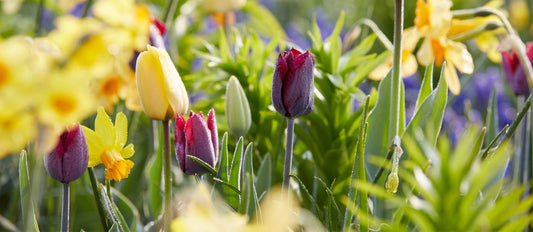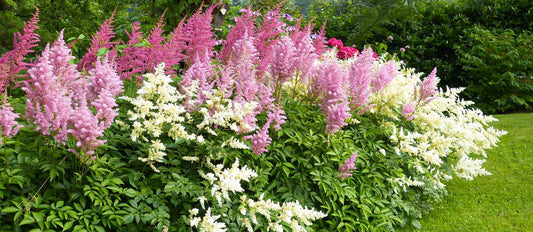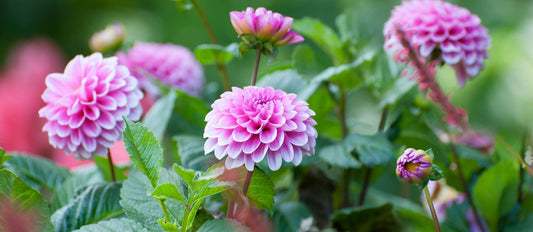Where snowdrops indicate that spring is on the way, the bell-shaped flowers of fritillaries tend to mark the end of the season. Fritillaries come in lots of different varieties, shapes and colours. Alongside the more well-known spring bulbs like tulips and hyacinths, they provide a playful touch to the garden. Although you may know fritillaries from their hanging flowers, they can sometimes be difficult to recognise Some varieties look completely different to each other. Come with us on a voyage of discovery to find out all about the different Fritillaria varieties and how to plant them in the autumn.
Fritillaria varieties
The best-known Fritillaria varieties are the crown imperial (Fritillaria imperalis) and the snake's head fritillary (Fritillaria meleagris).
- You can tell the crown imperial by its hanging yellow or orange, bell-shaped flowers. They sometimes have up to 12 flowers on a stem. And the stems are topped with pointed, green leaves. Their relatively long stems are between 60 and 90 cm high. Which means they look great in either a border or a flower pot.
- Unlike the crown imperial, the snake's head fritillary only has one to three flowers per stem, which are also a bit shorter, at around 30 cm. The pretty little flowers hang their heads, giving the impression that they are too heavy for the stem. Plant them in the lawn or in a beautiful, decorative pot.
Planting fritillaries
Although fritillaries are late spring flowers. Their flowers don't appear until April or May. Plant the bulbs in the autumn, just like tulips, narcissi and hyacinths. Unlike those bulbs, fritillary bulbs are more fragile because they don't have an outer skin. So, be extra careful when you plant them and protect them properly against freezing cold. It's important that you plant the bulbs before the first frosts and cover them over.
Fritillary bulbs like a sunny spot, so plant them in full sun or partial shade. The soil must be rich in nutrients and have good drainage. Start by loosening the soil and mixing it with fresh potting soil to ensure that it is fertile. Water must be able to drain away properly to stop the roots from rotting. Then plant the bulb around three times as deep as the height of the bulb. Fill the holes with fresh potting soil and give sufficient water. Never allow the bulbs to get too dry as this can stop them from flowering.
Fritillaries are also ideal for planting in flower pots. Take a pot with a hole in the bottom or make a hole yourself. Cover this hole with pot shards to keep it clear of soil. Then fill the pot with fresh potting soil and plant the bulbs. Water sufficiently so that the bulbs will be able to root. In winter bring the pots indoors when temperatures drop to freezing cold.
Care
Fritillaries are fairly easy to care for. Although it is essential that you protect them against freezing cold in winter. Remove any bubble wrap or other covering as soon as possible once winter is over, so that the bulbs can "breathe" properly. Keep giving them enough water but make sure that the bulbs aren't left in standing water. Too little water can cause growth problems and too much can cause the roots to rot. Once the bulbs start to sprout, add a little fertiliser to encourage growth. Always remove the spent flowers but not the leaves. the leaves provide the bulb draws extra nutrition.




